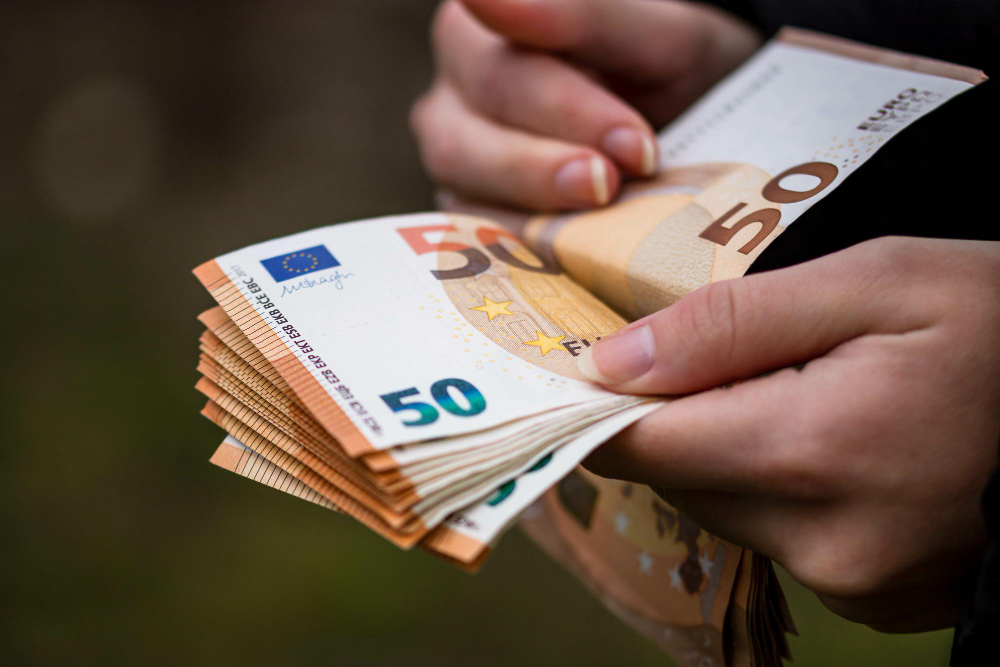Some EU countries use the eurozone as a credit card, with Germany picking up the tab – new research
Europe is home to many languages, varied geography and different cultures. And until fairly recently, it was also a place where almost every country had its own currency.
The arrival of a common currency in 1999 changed all that. Now 344 million citizens in 20 of the 27 EU member states use the euro, making it the world’s second most used international currency after the US dollar.
One purpose of the euro is to simplify cross-border payment transfers between eurozone member states. This is achieved using a system called “Target 2” (T2) which settles private sector bank-to-bank and commercial transactions between EU countries.
However, my research shows that this apparently innocuous settlement system is effectively being used to save the eurozone from imploding.
The problem is that some eurozone members – Italy and Spain, for example – import much more from other members than they export, particularly from Germany, the economic engine that has kept the eurozone economies going since 1999.
This results in a trade deficit, also known as a negative balance of trade. And this in turn creates a debt owed by Italy and Spain to Germany.
Luckily for them though, T2 converts this potentially risky debt into an apparently risk-free loan owed by the central banks of Italy and Spain to the central bank of Germany. The trouble is that there is no legal requirement in T2 to ever pay ot back.
United in debt?
Part of the reason for this imbalance is that the eurozone does not satisfy the economic conditions for being an “optimal currency area” (OCA) – that is, a geographical area over which a single currency and monetary policy can operate on a long term basis (in contrast to the UK and US, for example).
The different business cycles within the eurozone (with some countries booming economically, while others are in a slump) mean that trade surpluses and deficits will build up because inter-regional exchange rates can no longer be changed.
The normal way for a country to deal with a trade deficit is to devalue its currency, but this is not possible in the eurozone, since exchange rates between members were fixed in perpetuity in 1999. The most economically efficient countries, like Germany, accrue surpluses, while the more inefficient countries, like Italy and Spain, build up deficits.
To rectify this, surplus regions would have to recycle their surpluses back into deficit regions via transfers to keep the eurozone economies in balance. This is what happens in OCAs like the UK when the national government transfers tax revenues collected in England to Scotland, Wales and Northern Ireland to correct regional imbalances.
But the largest surplus country in the eurozone, Germany, refuses to accept that the EU is a “transfer union”. This is because the eurozone was set up on the explicit basis that market forces, not fiscal transfers, would be used to remove productivity differences between member states – and Germany was determined that it would not cross-subsidise inefficient members.
Yet deficit countries, including Italy and Spain, are using T2 for this very purpose. For them, T2 has effectively become a giant credit card. But unlike a regular credit card, neither the debt nor the interest that accrues on the debt ever needs to be repaid.
Secret European debt mountain
My research also shows that the size of the deficits being built up is causing citizens in those countries to lose confidence in their banking systems, leading them to transfer their funds to banks in surplus countries. T2 is being used to facilitate this capital flight to Germany, the Netherlands and Luxembourg.
Then there is the fact that no member state individually controls the European Central Bank. This implies that they do not (and cannot) stand behind their government debts or currency in the way genuine sovereign nations do – by printing more money to repay their debts when their tax base proves to be insufficient. Eurozone member states are therefore “sub-sovereign” states, since they are effectively using a “foreign currency”.
The present situation is not viable in the long term. And my research suggests only two realistic outcomes.
The first is a full fiscal and political union, with Brussels determining the levels of tax and public spending in each member state. The second is that the eurozone breaks up. Either way, it will cost German taxpayers well over €1 trillion (£854 billion).
The current faltering of the German economy – in part, due to the massive increase in energy costs following the Russian invasion of Ukraine and, in part, due to China no longer needing German machine tools for its factories – could mean that Germany does eventually capitulate to French demands for fiscal and political union.
But if it does, it will be a union based on the protectionist model favoured by France, with much greater state intervention and regulation in the economy and with large state subsidies for favoured sectors and firms.
This is very different from the “ordoliberal” (or “ordered liberal”) model preferred by Germany which supports free markets but seeks to prevent powerful private interests from undermining competition.
However, there are no examples in history where a country – let alone a continent – has regulated its way to economic success. For now, T2 is the silent bailout system that people rarely talk about – but upon which the very survival of the euro depends.

